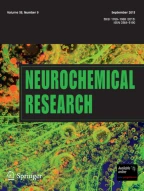Abstract
A new method for the isolation of high yields of collagen from human peripheral nerve is described. A major technique adopted in the present work is sedimentation of the tissue homogenates in a sucrose density gradient. The defatted fibrous material isolated after the removal of myelin was shown to be a relatively pure collagenous substance by amino acid analysis, indicating that the removal of noncollagenous proteins, especially glycoproteins, from collagen fibrils was effectively achieved by this method. The yield of collagen at this step was more than 90% of the total collagen in peripheral nerve. Subsequent extractions with solutions of neutral saline and sodium citrate were found to give further purification of the collagenous protein. The collagens from embryonic peripheral nerves were composed of Type I and III collagens, while Type III collagen was found to be less abundant in adult peripheral nerves.
Similar content being viewed by others
References
Thomas, P. K. 1963. The connective tissue of peripheral nerve: an electron microscope study. J. Anat. 97:35–44.
Shellswell, G. B., Restall, D. J., Duance, V. C., andBailey, A. J. 1979. Identification and differential distribution of collagen types in the central and peripheral nervous systems. FEBS Letters 106:305–308.
Koeppen, A. H., Messmore, H., andStehbens, W. E. 1971. Interstitial hypertrophic neuropathy. Biochemical study of the periphral nervous system. Arch. Neurol. 24:340–352.
Pleasure, D., Bora, F. W., andLane, J. 1974. Regeneration after nerve transection: Effect of inhibition of collagen synthesis. Exp. Neurol. 45:72–78.
Seyer, J. M., Kang, A. H., andWhitaker, J. N. 1977. The characterization of Type I and Type III collagens from human peripheral nerve. Biochim. Biophys. Acta 492:415–425.
Everly, J. L., Brady, R. O., andQuarles, R. H. 1973. Evidence that major protein in rat sciatic nerve myelin is a glycoprotein. J. Neurochem. 21:329–334.
Piez, K., Eigner, E. A., andLewis, M. S. 1963. The chromatographic separation and amino acid composition of the subunits of several collagens. Biochemistry 2:58–66.
Fujii, K., Kajiwara, T., andKurosu, H. 1979. Effect of vitamin B6 deficiency on the crosslink formation of collagen. FEBS Letters97:193–195.
Bergman, I., andLoxley, R. 1963. Two improved and simplified methods for the spectrophotometric determination of hydroxyproline. Anal. Chem. 35:1961–1965.
Rubin, A. L., Drake, M. P., Davison, P. E., Pfahl, D., Speakman, P. T., andSchmitt, F. O. 1965. Effects of pepsin treatment on the interaction properties of tropocollagen macromolecules. Biochemistry 4:181–190.
Sykes, B., Puddle, B., Francis, M., andSmith, R. 1976. The estimation of two collagens from human dermis by interrupted gel electrophoresis. Biochem. Biophys. Res. Commun. 72:1472–1480.
Fujii, K., Tanzer, M. L., Nusgens, B. V., andLapiere, C. M. 1975. Aldehyde content and cross-linking of Type III collagen. Biochem. Biophys. Res. Commun. 69:128–134.
Miller, E. J., Epstein, E. H., andPiez, K. A. 1971. Identification of three genetically distinct collagens by cyanogen bromide cleavege of insoluble human skin and cartilage collagen. Biochem. Biophys. Res. Commun. 42:1024–1029.
Timpl, R., Wick, G., andGray, S. 1977. Antibodies to distinct types of collagens and procollagens and their application in immunohistology. J. Immunol. Methods 18:165–182.
Hahn, E., andTimpl, R. 1973. Involvement of more than a single polypeptide chain in the helical antigenic determinants of collagen. Eur. J. Immunol. 3:442–446.
March, S., Parikh, I., andCautrecasa, P. 1974. A simplified method for cyanogen bromide activation of Agarose for affinity chromatography. Anal. Biochem. 60:149–152.
Epstein, E. H. Jr. 1974. [αl(III)]3 human skin collagen. Release by pepsin digestion and preponderance in fetal life. J. Biol. Chem. 249:3225–3231.
Shuttleworth, C. A., andForrest, L. 1975. Changes in guinea-pig dermal collagen during development. Eur. J. Biochem. 55:391–395.
Author information
Authors and Affiliations
Rights and permissions
About this article
Cite this article
Fujii, K., Tsuji, M. & Murota, K. Isolation of peripheral nerve collagen. Neurochem Res 11, 1439–1446 (1986). https://doi.org/10.1007/BF00966223
Accepted:
Issue Date:
DOI: https://doi.org/10.1007/BF00966223

